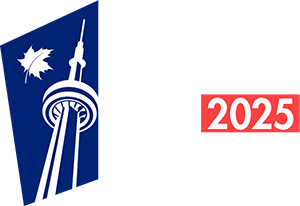Approaches to Value and Classification Fact Sheet
What you need to know: the basics
- MPAC uses one of three industry standard approaches to assess properties: the direct comparison approach, the income approach, or the cost approach.
- The approach is chosen based on the property’s current use and how frequently similar types of properties are bought and sold on the open market.
- Assessments are based on a legislated valuation date mandated by the provincial government.
Direct Comparison Approach
The direct comparison approach analyzes recent sales of comparable properties to provide an indication of value. When applying the direct comparison approach, MPAC analyzes recent real estate market sales activity of comparable properties to establish an estimate of current value assessment.
MPAC uses mass appraisal to develop the valuation parameters, which explain the value influences in the local market, to estimate the current values of properties from MPAC’s real estate data.
Examples of property types valued using the direct comparison approach include:
- single-family residences
- condominiums (commercial and industrial)
- vacant land
- in the City of Toronto: general purpose commercial, industrial and mixed use
Cost Approach
The cost approach is mainly used for property types where the market value is related to its cost. The cost approach is based on the idea that an informed purchaser would pay no more for a property (land and buildings) than it would cost to buy a similar piece of land and build similar structures.
The cost approach involves estimating the value of the land and how much it would cost to reproduce the buildings, structures on the land, less depreciation to account for the property’s age and other conditions (i.e. physical and market conditions).
Examples of property types that may be valued using the cost approach include:
- general-purpose industrial properties
- large and special purpose properties (i.e. automotive assembly plants, pulp and paper mills, etc.)
- grain elevators
- marinas
- warehousing
- small commercial (excluding Toronto)
Income Approach
MPAC uses this approach when the market value is directly tied to the property’s ability to generate revenue. In this case, we consider both market value and the property’s ability to earn income.
The income approach requires a detailed analysis of both income and expenses for the property being valued and other similar properties to determine the income a property could generate. We then analyze the relationship between property incomes and sale prices to calculate a capitalization rate, which is applied to similar properties.
Examples of property types valued using the income approach include:
- industrial malls
- office buildings
- retail properties
- shopping centres
- hospitality properties
- multi-residential buildings (with seven or more units)
Property Classification
The classification of your property determines the tax rate that your municipality uses to calculate your property taxes.
Some properties may belong to more than one class. For example, if a building has an apartment on the top floor and a retail store on the main floor it would fall into two classes - residential for the apartment and commercial for the store.
There are seven major property tax classes and generally each has its own tax rate. Tax rates set by your municipality which based on their budget calculation for the year.
- residential
- multi-residential
- commercial
- industrial
- pipeline
- farm
- managed forests
Regulated Rates
Some properties are difficult to assess using the three approaches to value because:
- They seldom trade in the marketplace
- When they do trade, the sale price usually includes non‐assessable items that are difficult to separate from the sale price
- They cross municipal boundaries
- They are unique
To arrive at an assessed value for these types of properties, the Ontario government assigns regulated rates. Types of regulated properties include power generating stations and linear properties such as railways or gas pipelines.
Property Exempt from Taxation
All real property in Ontario is assessable and taxable; however, the Assessment Act provides that certain properties are exempt from taxation. Such properties can include:
- Crown land; municipal property; cemeteries and burial sites; places of worship; universities and colleges; public hospitals and highways.
About MPAC
The Municipal Property Assessment Corporation (MPAC) is an independent, not-for-profit corporation funded by all Ontario municipalities and is accountable to the Province, municipalities and property owners. Our role is to value and classify all properties in Ontario in compliance with the Assessment Act and regulations set by the Government of Ontario.
- We are the largest assessment jurisdiction in North America, assessing more than 5.6 million properties in Ontario, representing more than $3.1 trillion in property value.
- Our assessments provide the foundation municipalities use to calculate the property taxes needed to pay for community services.
- Our assessors are trained experts in the field of valuation and apply appraisal industry standards and best practices.
- Our assessments and data have met international standards of accuracy and are relied upon by banks, insurance companies and the real estate industry.




